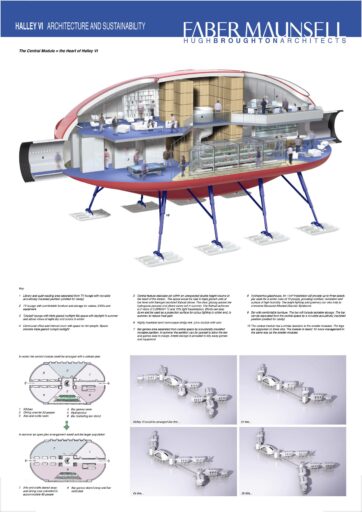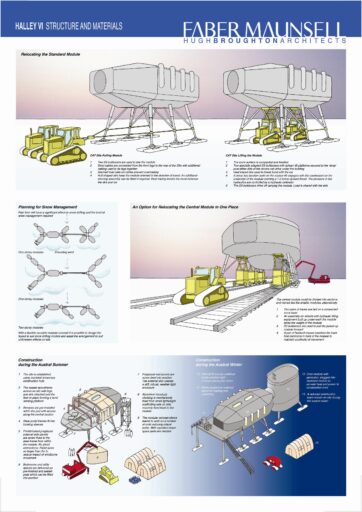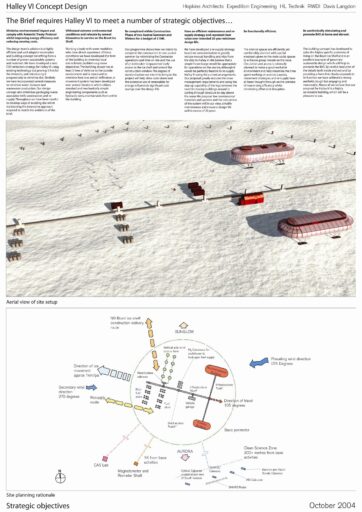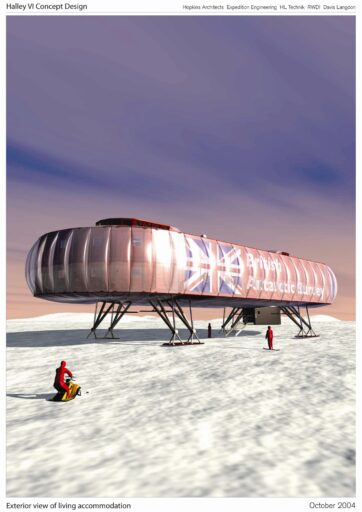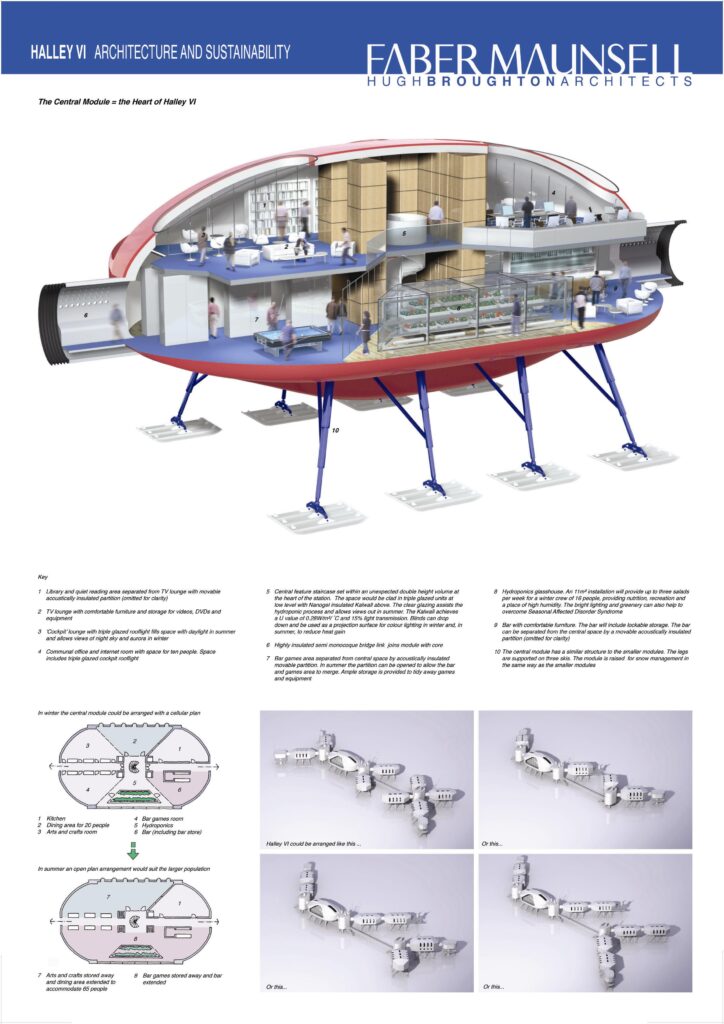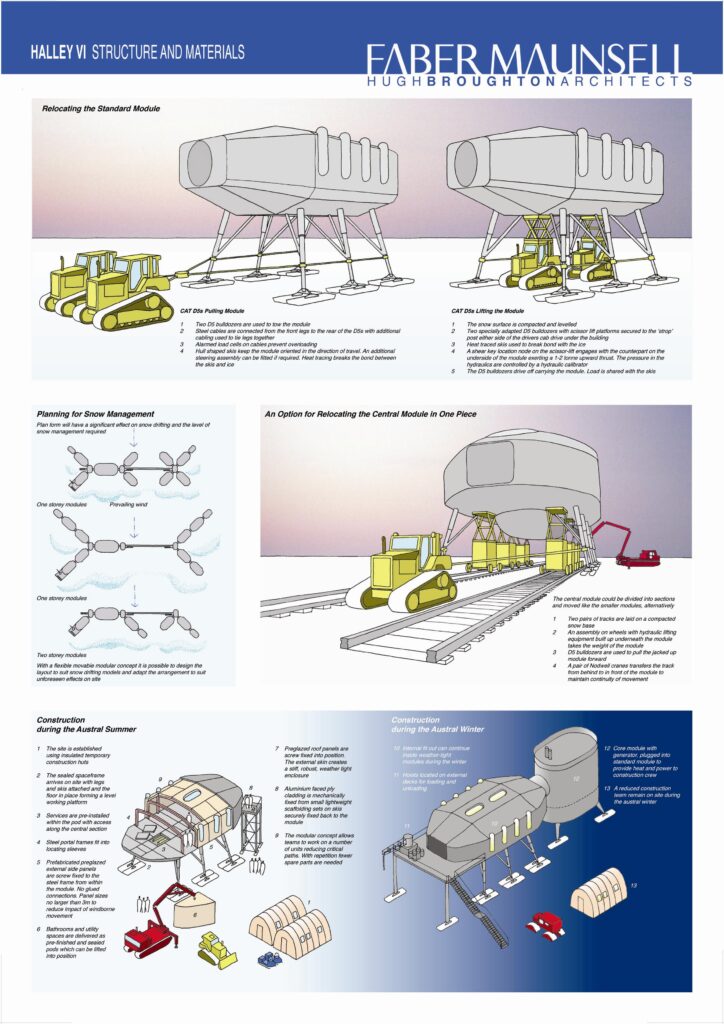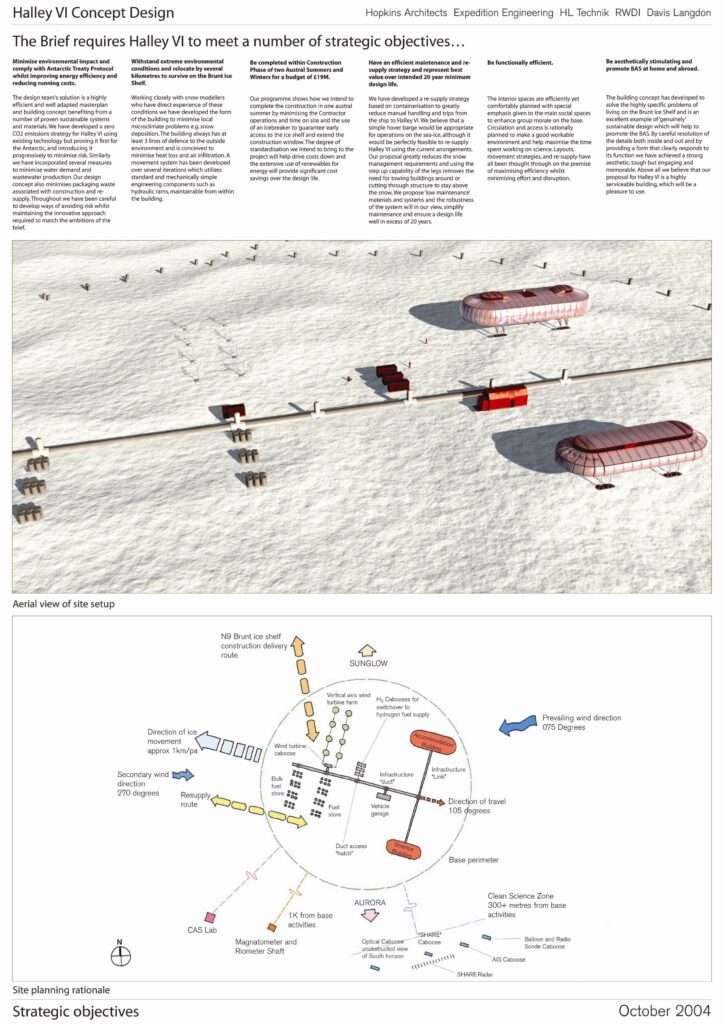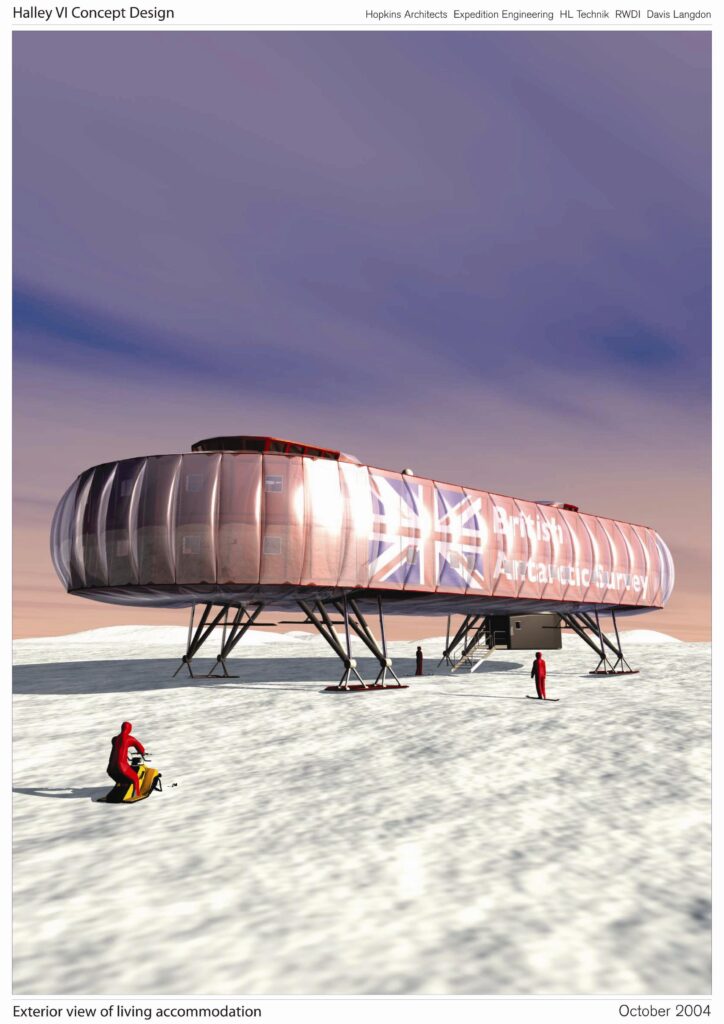Building in Antarctica
Competition for the project of the new base "Halley VI"
British Antarctic Survey (BAS) / Royal Institute of British Architects (RIBA),
Competition for the project of the new "Halley VI" base in Antarctica
Building in Antarctica
The British Antarctic Survey (BAS), with the support of Royal Institute of British Architects (RIBA), has organized a competition for the project of the new base "Halley VI", a station where UK researchers will be able to continue studying the Antarctica, as they have done since 1956 to today within the five previous bases - Halley station is famous for the discovery of the hole in the ozone layer of 1985.As a premise to the final phase, which will take place from June 2005, a first selection has already been made to identify the design groups from which the winner will be chosen: after a first selection that reduced the proposals in the race to six (of the eighty-six sent), the official announcement with the names of the three finalists.

The extensive use of engineering skills in each of the finalist groups is a reflection of the particular theme of the competition and of the need to allow a maximum of 60 people to work and coexist in an environment with average temperatures around -40 C °, lashed from winds that blow at 140-150 km per hour.
The two factors that have had the greatest impact on the functioning of the previous research station are snow (heaps up to 1.5 meters high are formed in the area) and the shape of the "Brundt" ice shelf, on which the scientific base is located. The sheet of ice 150 meters thick glides towards the ocean, covering 400 meters per year and breaking into huge pieces that eventually come off. The metal supports of the current "Halley V" because of this phenomenon are likely to deform and jump away from the moving ice.
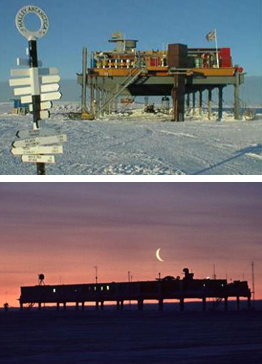 BAS has expressly requested the designers to design mobile structures, that is, to provide elements that not only support the research station but also allow it to be moved, to maintain the safety distance from the ocean, and to keep it raised, preventing snow from being blown by the wind to amass and unbalance the passenger compartment.
BAS has expressly requested the designers to design mobile structures, that is, to provide elements that not only support the research station but also allow it to be moved, to maintain the safety distance from the ocean, and to keep it raised, preventing snow from being blown by the wind to amass and unbalance the passenger compartment.In the three finalist proposals, the application of sophisticated technologies marries the philosophy of respect for the Antarctic ecosystem, an irreplaceable resource both for the study of atmospheric conditions (it has the least polluted air on the planet) and for the observation of bodies heavenly. In addition, in the Antarctic ice there are precious "clues" to trace the causes of climatic variations.
Another trait common to almost all the projects submitted to the jury chaired by the director of the British Antarctic Survey, is the choice of a futuristic, almost "aerospace" design, consistent with the assimilation of Antarctica to a sort of alien world.
The British Antarctic Survey, a prestigious research institute that acts as a national operator on behalf of the United Kingdom in Antarctica and is part of the Natural Environment Research Council, will communicate the choice of the winning project in September 2005.

Building in Antarctica
Author
Category Contemporary Architectures




























































